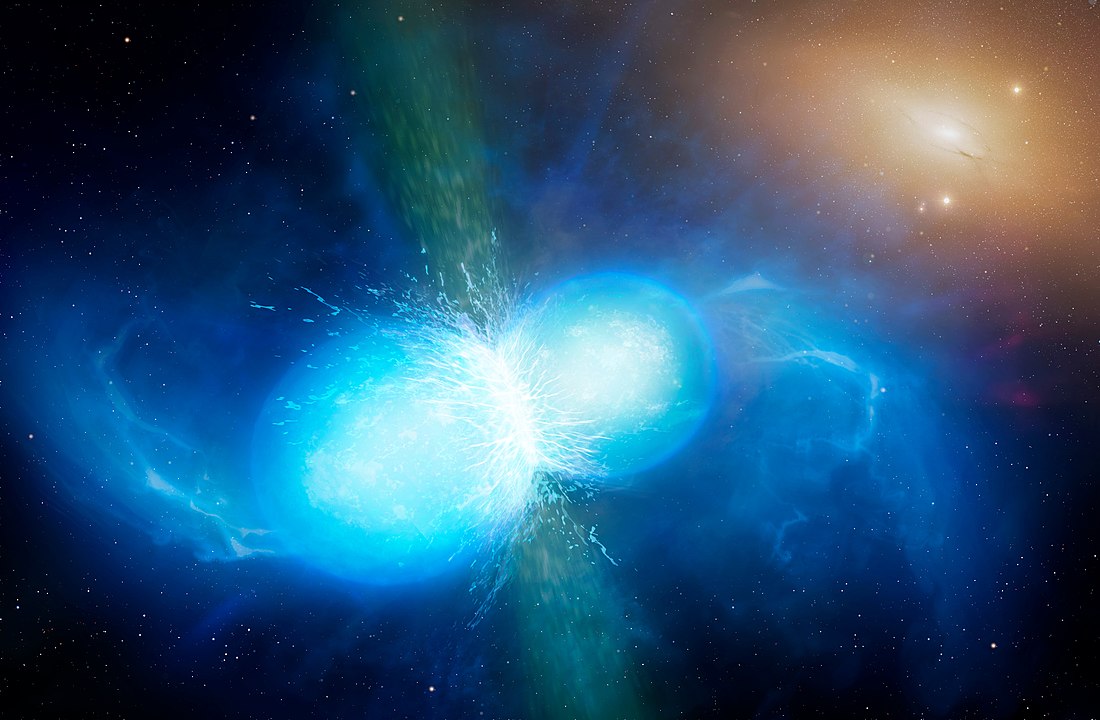Kilonovae are incredibly powerful explosions. Whereas regular supernovae occur when two white dwarfs collide, or the core of a massive star collapses into a neutron star, kilonovae occur when two neutron stars collide. You would think that neutron star collisions would produce explosions with all sorts of strange shapes depending on the angle and speed of the collisions, but new research shows kilonovae are very spherical, and this has some serious implications for cosmology.
Kilonova explosions were first predicted in 1974, but we’ve only been able to reliably identify them in the last decade. Part of this is due to detailed spectral analysis, and part is due to our ability to detect neutron star mergers through gravitational waves. The combination of gravitational and optical data gives us a much better understanding of these collisions.
Kilonova explosions play a key role in the evolution of the universe, particularly in how heavy elements are created. Neutron stars are a dense mass of nucleons, so their collision creates and scatters most of the elements further along the periodic table than iron. Elements such as gold and platinum. Most of the critical materials for our electronics are created within kilonovae. But the details of this process are not well understood, as seen by this recent study.
The team looked at data from the gravitational wave event GW170817. The event was also seen at optical wavelengths as AT2017gfo. From the gravitational wave data, we know the two neutron stars were orbiting each other about 100 times a second just before they collided, meaning that the explosion should have expanded as a somewhat flattened disk. But when the team measured the motion of the expanding shell, they found a spherical shell of lighter elements. Therefore we know the explosion was spherical, and we know it wasn’t because the neutron stars collided in some unusual spherical way. Something about the explosion makes it spherical, which the team did not expect.

We don’t know why kilonova explosions like this are spherical, but there are some ideas. One is that the two neutron stars merge to form a single supermassive neutron star before collapsing to become a black hole. Another is that the formation of a black hole during the collision releases an intense spherical burst of energy at the last moment, which makes the material expand in a more spherical fashion. Understanding the details of this process will be a focus for further research, and will help us understand the process of element creation.
There is a secondary benefit to this discovery, and it has to do with dark energy and cosmic expansion. Various measurements of cosmic expansion have found rates that slightly disagree with each other. This “tension” in our measurements means there is a subtle problem with our cosmological model. To resolve this issue astronomers have sought out new ways to measure cosmic expansion. Thanks to this work, astronomers could use kilonovae as a standard candle to measure cosmic expansion. Since kilonovae explosions are spherical, astronomers could compare the apparent size of a supernova explosion with its actual size as seen by the gas motion, and thus measure the rate of cosmic expansion at different distances.
There is still much we don’t understand about kilonova, but thanks to this research we have new ways to understand them and the universe as a whole.
Reference: Sneppen, Albert, et al. “Spherical symmetry in the kilonova AT2017gfo/GW170817.” Nature 614 (2023): 436–439.

